Breeder's Starter Kit
I think it's best to start small and slow in the beginning. There is no point in building a large mousehouse with 20 frames, if in a moment we decide that it is not for us. And even if we do, we can start to be terrified by the amount of duties associated with breeding.
Cages
Ethical breeders generally keep most mice in similar 'cages' as they would normally keep pets. Large aquariums, samles and other large plastic boxes, terrariums, dunes, standard cages ...
To start we will need:
- at least one large apartment: e.g. 100x50cm, 120x50cm
- a pair of medium (min. 2 pieces): e.g. 80x40cm, 70x40cm, 60x40cm
- containers for single males (min. 1 piece): e.g. 50x30cm, 60x40cm
- smaller containers, typically breeding (min. 3 pieces): e.g. 40x30cm, 50x30cm
Large apartment
Our main herd will live in it. Adolescent females, on breeding rest or waiting for a new home, also possible retirees. In this kind of place, the mice are supposed to feel at their best and be happy. :)
I recommend a large cage or aquarium.

aquarium 100x50cm
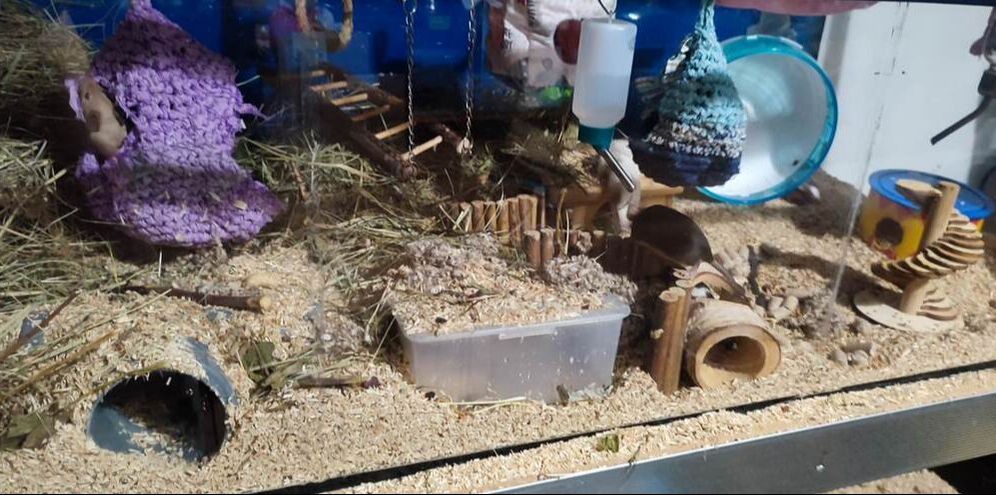
aquarium 120x55cm
Medium containers
This type of housing will most often be used for rearing older litters or for groups of young males.
It will also work well for mating a male with more than 1 female.
Minimum dimensions: 60x40cm, recommended dimensions: from 70x40cm to 100x50cm
I recommend 130l boxes (e.g. samla from IKEA), smaller aquariums, dunes, or cages.
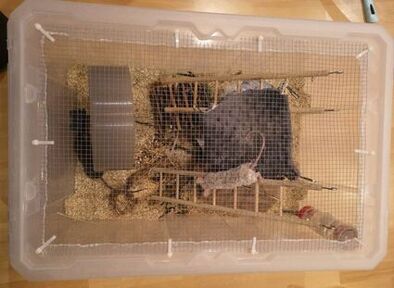
box approx. 60x40cm
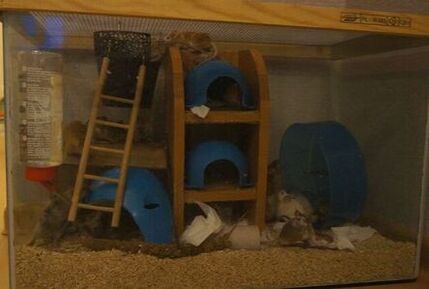
Aquarium 60x40cm for a group of males
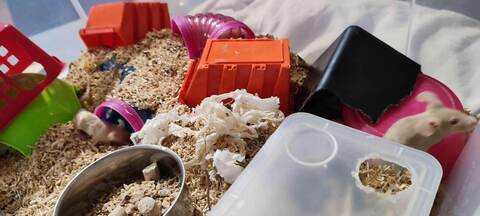
a playground for grown-up kids
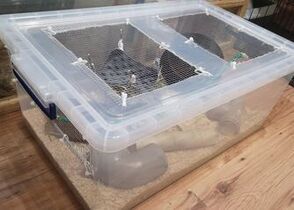
box approx. 70x40cm
Male containers
Unfortunately, it often happens that after mating with a female, the male will not return to the male herd without any problems.
Of course, we should prevent this by proper breeding selection, but sometimes a male just has to live alone. A male that will no longer be "needed" in breeding should be neutered.
Minimum dimensions: 50x30cm, recommended dimensions: 60x40cm
I recommend plastic boxes of appropriate dimensions, smaller aquariums, cages.
Smaller breeding containers
This type of accommodation is used only for a moment of the mouse's life: mating, pregnancy and rearing of young, quarantine.
It is usually equipped minimally so as not to disturb the mice - safe rearing of babies or successive mating. Minimum dimensions 40x30cm, recommended dimensions: from 50x30cm to 60x40cm
I recommend plastic containers or "labocages"
As a metal mesh for reworking boxes and creating lids, we recommend:
"welded breeding mesh 6.4mm/0.6mm" available on Allegro.
Perfect containers, both for single males, for mating and rearing young, are:
samle 45 liters from IKEA. (or lower version, 40l)
They have great dimensions (56x39cm, slightly smaller at the base), they look aesthetically pleasing,
and they are one of the cheapest options. (The cost of the lid is an additional PLN 20)
They will fit perfectly on a 120x60cm shelf.
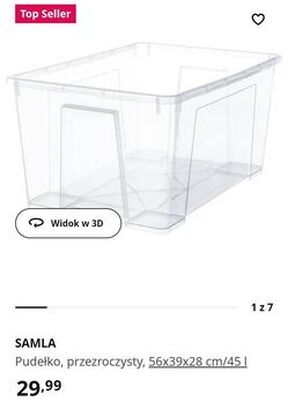
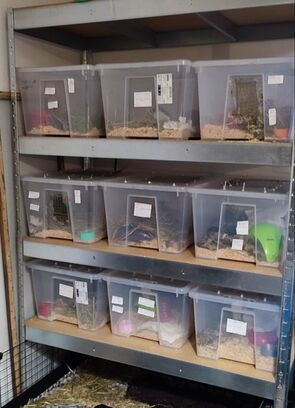
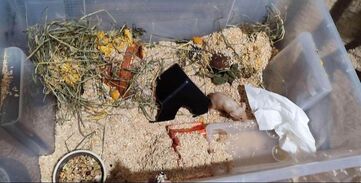
decorated boxes for a female with a litter
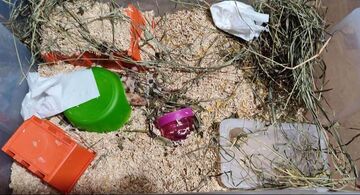
There is also a second version of the boxes, but they are definitely smaller and we think that - too small. They can only work as 'emergency', transport or very temporary boxes. 11 liters, 39x28cm (35x23 in the base)

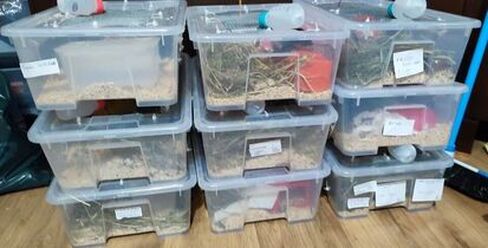
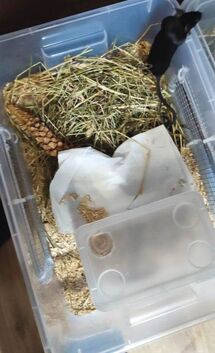
What are lab boxes?
In other words, laboratory cages. This is a very convenient type of cage for the breeder, suitable for larger farms.
They save time on daily watering and feeding and are great for disinfection and cleaning.
The 40x30cm version is a size suitable for a "smaller breeding container". You can get them for about PLN 50/piece
The 60x40cm version is great for litter rearing, mating and smaller groups of males.
More difficult to access, price approx. PLN 70-100/piece.
Lab cages do not look very aesthetically pleasing to the eye, so in smaller farms I suggest staying with other versions of cages.
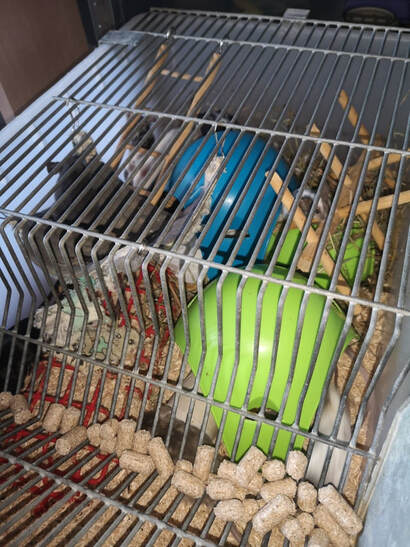
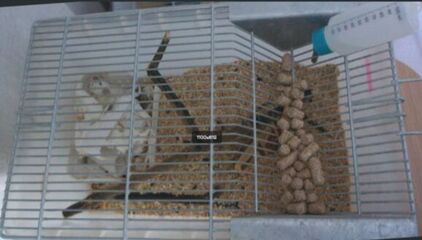
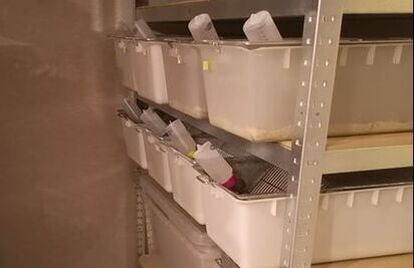
What could a small mouse farm look like?
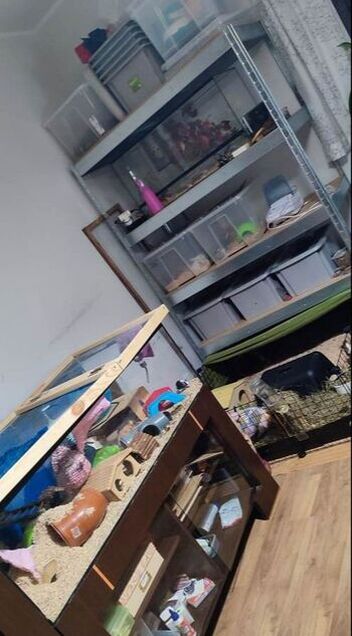
Beginnings of Pink Phantom Mousery kennel :)

My humble shelf for breeding boxes, 3 years ago :)
Nutrition of breeding mice
There are many potential methods of feeding farm mice, but according to most breeders around the world, laboratory pellets are the best option.
In Poland, the best brand is Labofeed (H - for the period of breeding and reproduction, B - maintenance feed), which is properly balanced, thanks to which the animals grow healthily and also go through pregnancy, childbirth and rearing the young without any problems .
Some use only the H version, others a combination of H and B, for the respective groups of mice.
Labofeed can be ordered only by writing a direct e-mail to Wytwórnia Pasz Morawski: pasza@sukces.info.pl
In addition to pellets, other ingredients can (and should) be included in the diet of mice - greens, vegetables, herbs, delicacies, and possibly also a mixture of seeds.
In summary, pups and breeding mothers:
A sure basis - labofeed H, constituting at least 80% of the nutrition + additives: seeds, delicacies, fresh.
Males and females outside the breeding period can be fed a balanced basic food in the form of grains, e.g. food from Rodents in a cocoon or as described above. At the discretion of the breeder.
In addition, it is always worth having a preparation for small and weak mice in the breeder's first aid kit, which will help to feed/strengthen the babies or their mother if necessary, e.g. "Beaphar milk for small animals".
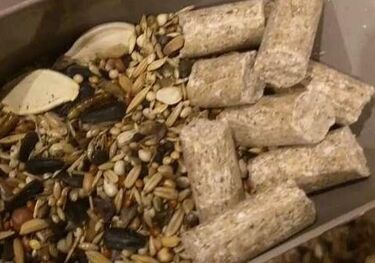

Accessories
Same as in the case of pets - only in larger quantities... :)
- We need safe, suitable homes for the female and pups
- At least one reel per cage for flocks (excluding the smallest breeding containers)
- Flowers, hideouts, tunnels, bridges, hammocks, ropes and much more...
The houses for the expecting female should be quite spacious, preferably with only one entrance from the top or front. They should be quite heavy, i.e. every thin plastic falls off. This is primarily about the safety of tiny sucklings, which can easily get lost in the litter / fall out from under the house.
Of course, a house is not necessary, because sometimes the female likes to create a nest loosely in the litter, but it is worth giving her a choice.
Litter
With more mice, this is an even more important aspect. When it comes to bedding, we have complete freedom here and it is worth trying out different products on your own (suggesting the list of recommended bedding). Everyone may like something different. Just be careful with dusty bedding, which can irritate the eyes and respiratory tract of mice.
Examples of recommended bedding: Allspan (Tierwohl Super), hemp, linen, fine wood chips, dedusted coarse sawdust
Red mice
The cost of a purebred mouse is usually around PLN 50-100.
We will need at least 1-2 males and 3-4 females to start.
If we import mice from abroad, it will obviously be much more expensive.
At the beginning, it is worth taking animals from a recommended Polish breeding that breeds the varieties we are interested in.
Always inform the breeder of your intention to breed and ask them to choose the right mice that are suitable for breeding and will be suited to each other.
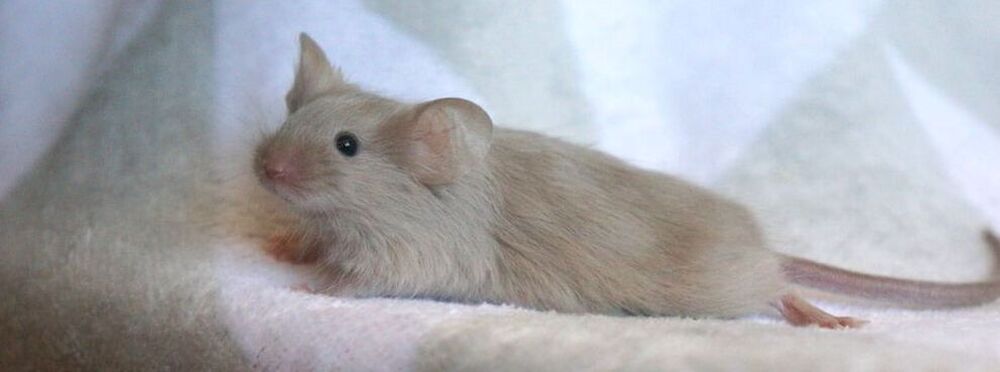
Summary
On average we will spend from 800-1500 to 2000 PLN
We also have a lot of work to do on converting plastic containers into safe cages, making covers for the aquarium and much more. Have fun completing! :)
Text: Karolina Patalan, Mysigonek kennel
